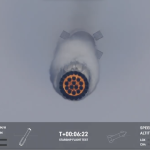
Chip designer NVIDIA Corporation’s $40 billion attempt to take over British design house Arm Ltd. is facing opposition from a host of American companies. This opposition is the latest in a series of setbacks for the affair, which has faced scrutiny from regulators worldwide. According to a report from The Telegraph, Palo Alto, California-based electric vehicle manufacturer Tesla Inc, digital retail giant Amazon and Samsung Electronics have shared their reservations with the Federal Trade Commission (FTC) about the proposed acquisition, which NVIDIA expects to secure global regulatory approval early next year. Reports of the opposition come to light as the FTC is expected to release the detailed results of its investigation, which started earlier this year, in the coming weeks.
Samsung, Amazon & Tesla Join Qualcomm, Google And Microsoft In Opposing NVIDIA’s Arm Acquisition Bid
Arm’s ubiquity in the technology ecosystem makes it an attractive target for NVIDIA but also makes the deal a bull’s eye for criticism from companies belonging to all industry sectors. Some of the earliest opposition to the deal came from San Diego, California-based semiconductor designer Incorporated, who relies on Arm’s chip designs for a wide variety of products, including processors for nearly all Android smartphones.
Qualcomm was joined by Google and Microsoft, with both companies selling gadgets that use processors designed with Arm’s technologies. Now, according to The Telegraph, Tesla, Amazon and Samsung have entered the fray against NVIDIA, with each’s stake in the matter as clear as daylight.
While Amazon is primarily known for its retail services, it has several gadgets, such as its Alexa smart speaker, which utilizes Arm’s designs. However, crucially for Amazon, the backbone of its Amazon Web Services (AWS) division is based on Arm’s designs. Amazon uses the in-house Graviton series of processors for its cloud computing segments, which utilize Arm’s Neoverse cores for their computing designs.

Like Google and Microsoft, Samsung also relies heavily on Arm’s designs for its products. The Telegraph’s report implies that it is the smartphone division of the Korean chaebol, which uses Qualcomm’s processors for smartphones sold inside the United States.
For Tesla, the biggest concern is the company’s HW 3.5+ processor for its vehicles. This chip is responsible for managing a Tesla’s onboard systems, and crucially, its autonomous driving systems. It uses Arm’s designs for central processing and graphics processing units, making the British company integral to Tesla’s main product.
The opposition to the deal in the U.S. comes as it undergoes extensive scrutiny in the United Kingdom and the People’s Republic of China. The U.K. is investigating whether the acquisition is a threat to its national security, and China’s State Administration for Market Regulation (SAMR) has also consulted parties that might be affected by the deal, and unconfirmed reports have suggested opposition from Huawei Technologies Ltd.
Additionally, another report from The Telegraph, which surfaced late last month, suggested that NVIDIA failed to submit the deal’s paperwork in time to the European Union’s antitrust regulator. The European Commission, responsible for such affairs in the Union, will resume its functions next month, with NVIDIA and Arm having been cautioned earlier not to submit the documents during August while the Commission was on vacation. NVIDIA is expected to submit the documents in September after unofficial discussions with the regulator.
NVIDIA, which uses Arm’s designs for its Bluefield datacenter services accelerator, hopes to target growing segments in the technology sector by acquiring Arm. These sectors include artificial intelligence, machine learning and the Internet of Things (IoT), among others, and NVIDIA’s chief executive officer, Mr. Jen-Hsun Huang, has expressed his appreciation for Arm’s business model on multiple occasions, alongside promises to keep this model intact should his company succeed in acquiring the design firm.
As a side note, a report from The Financial Times which surfaced on Friday put the price tag of the deal at $54 billion. This has been repeated by several publications including Reuters and ArsTechnica. However, NVIDIA’s press release mentions the price tag as $40 billion Go figure. $40 billion roughly equals AUD54 billion, so maybe there’s that.
The post NVIDIA Fights To Keep $40 Billion Deal Dream Alive As Foes Join Forces by Ramish Zafar appeared first on Wccftech.
Powered by WPeMatico





